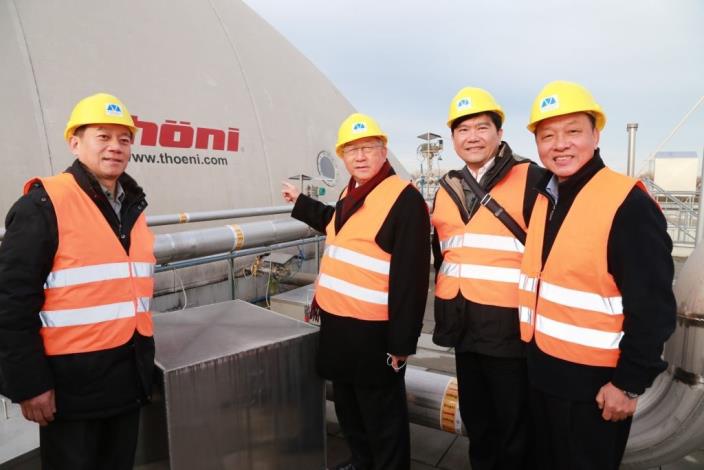 There is no any garbage incinerator in Hsinchu County. To seek for a new solution for waste disposal, delegations from Hsinchu County Government and Environmental Protection Administration (EPA), Executive Yuan headed to Germany and the Netherlands on December 5th. They specially visited Thöni’s plants in Germany to learn about their waste treatment facilities and technologies, including their incinerator and dry anaerobic digestion system.
There is no any garbage incinerator in Hsinchu County. To seek for a new solution for waste disposal, delegations from Hsinchu County Government and Environmental Protection Administration (EPA), Executive Yuan headed to Germany and the Netherlands on December 5th. They specially visited Thöni’s plants in Germany to learn about their waste treatment facilities and technologies, including their incinerator and dry anaerobic digestion system.
Magistrate Chiu Ching-chun revealed that since there is no any garbage incinerator in Hsinchu County, the garbage should be transported and burnt in nearby cities or counties, such as Hsinchu City, Miaoli County and Taoyuan City. The garbage disposal problem has become a crisis that desperately requires to be solved. This year, the Executive Yuan has passed the “Multiple Waste Treatments Program,” through which Hsinchu County Government hopes to deal with the trash generated by its one million residents. By visiting Thöni and learning from their experience, the government looks forward to figuring out new solutions with the assistance of EPA, and will take proactive actions to apply for funds or subsidies to the Executive Yuan. Through recycling, biogas power generation and the reuse of bottom ash, Hsinchu County Government eagers to find out the best solution.
When Peter, the Project Manager of Thöni, guided the delegations around the district, he mentioned that it had been for composting plants before becoming an area for the dry anaerobic digestion facilities in 2011. Augsburg, the city where the plants are located, generates 1,000 tons of garbage each day. About 700 tons of non-recyclable waste is sent into the incinerator, while about 250 tons of organic waste is treated by the dry anaerobic digestion system.
In the system, 20 to 30% of organic waste is first picked out. Then it can be further used to generate electricity power and heat, which puts circular economy into practice. In this way, the volume of garbage sent into the incinerator can be effectively reduced, and each resource is properly and fully utilized. EPA said that they would bring what they learned back to Taiwan and draw up related policies.
Hsinchu County generates 200 tons of garbage each day. Through the system, the trash sent into the incinerator is expected to be reduced by 50 to 60 tons daily. If the technology is successfully introduced into Hsinchu County, it may be extremely helpful for its garbage disposal problem.